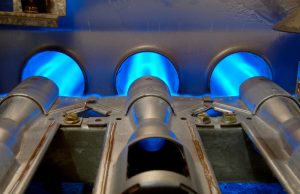
inside-of-a-gas-furnace
Natural gas-powered systems in your home aren’t inherently dangerous, however, you need to remain vigilant. You can’t ignore the possibility of a gas leak with a furnace system. It’s important to stay prepared through means like carbon monoxide detectors but it’s also important to understand how your furnace system works too.
That’s why we’re here. We don’t expect you to spend your leisure time brushing up on the latest HVAC textbooks or binge-watching furnace documentaries. We’re here to give you a crash course in everything furnace 101 today so you’re prepared for anything that might come your way in the future. If you do have a hiccup and you need furnace repair in St. Paul, MN then make sure to call our team.
What’s a Heat Exchanger?
Let’s start with the basics—what in the world is a heat exchanger? Well, your heat exchanger is the furnace component that heats your air. It’s comprised of a set of tubes or coils that repeatedly loops through the airflow inside your furnace system. The heat exchanger is also in charge of separating the combustion process from your breathing air. The heat exchanger is what ensures that your heated air distributes safely through your home to warm your house.
Signs That You Have an Issue
- Corrosion: If your heat exchanger starts to fail then this might start to cause corrosion of your furnace. Keep an eye out for any run-down parts of your furnace, they’re normally a glaring sign of a problem with your heat exchanger.
- A Change in the Color of Your Flame: When your furnace operates without any flaw then it should have a very steady blue flame. A quite common sign that you’re having trouble with your heat exchanger is a change in this color from blue to yellow. Watch the burners with the furnace kicks on, if you see weak, dancing yellow flames then you’ve got a problem on your hands.
- Soot: The number one sign that you’re having trouble with your heat exchanger is a build up of soot. This is a symptom of an incomplete combustion process.
- A Triggered Carbon Monoxide Detector: Has your carbon monoxide detector gone off recently? This is a sign that you might have a cracked heat exchanger that’s letting carbon monoxide seep out.
How this Affects You and Your Home
So we know that a cracked heat exchanger is bad for your home, but how does it affect you? Well, a cracked heat exchanger allows carbon monoxide to leak from its system and this is incredibly bad for your health. Carbon monoxide is poisonous and it’s so dangerous because it’s colorless and odorless. You should have a great carbon monoxide detector in place to prevent any problems, but you can also look out for the signs of poisoning—dizziness, headaches, nausea, and chest pains. If you think you have a cracked heat exchanger call for service from a professional as soon as possible.
